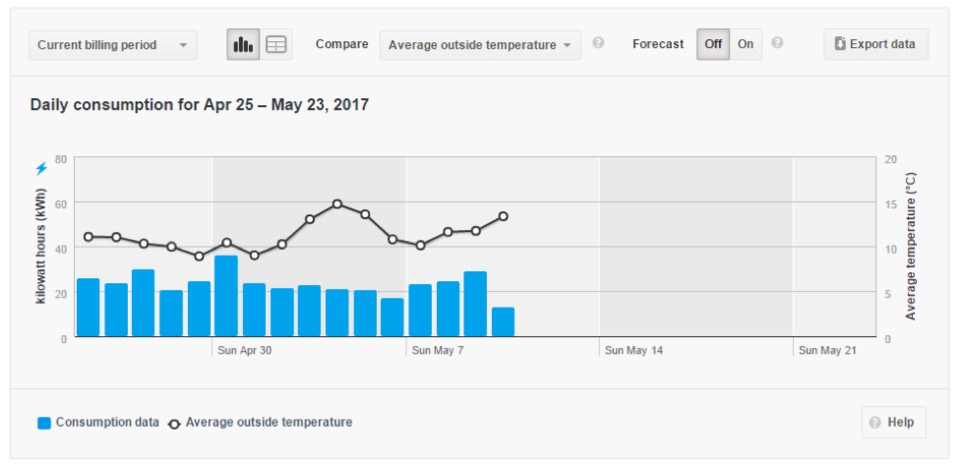It can be tempting to throw a few dirty clothes in the washing machine on their own, or run the dishwasher before it’s full. After all, these habits couldn’t be wasting that much power, could they?
With BC Hydro’s suite of online electricity tracking tools, you can now find out exactly how much energy you’re using every month, as well as what that costs you.
By logging in to your account on the BC Hydro website, you cantrack your household’s electricity usage to help you understand your energy bills. These include graphs that inform you of your hourly, daily, weekly and monthly electricity use, comparison tools that show your home’s electricity use compared to similar homes nearby and information about how outside temperatures affect your heating and cooling costs.

This information gives insight into your electricity use habits, which might lead you to think twice when you run the dishwasher before it’s full.
To take control of your energy use, check out this quick overview of some of the tools’ features and how you can use each to adjust your consumption habits and save on your energy bill.
Track your electricity use
Households in B.C. are billed for each kilowatt-hour used, which are affected by things like how often you run appliances. Reducing electricity use begins with understanding your home’s current usage, and then making informed decisions about how your family can cut back.
Log into your household’s BC Hydro online account to see detailed information about your electricity use and billing. Select the “View detailed consumption button” to view energy use tracking details down to the hour, allowing you to view the highest usage hours in your home and make adjustments to your habits accordingly. That might include hang drying your laundry or switching off the lights when you’re not at home. Learn more about how to understand and interpret your electricity use on BC Hydro’s website.
By comparing household usage to your previous year, you can also analyse both increases and decreases in energy use within your home.
Compare with similar homes nearby
Online tracking tools can provide information about the energy use of similar homes nearby, making it easy to see if you’re using more or less energy than others.
Monitor outside temperatures
The detailed consumption information shows you how the outside temperature affects your electricity bill. On colder days when you crank up the heat, you’ll see correlating increases in your energy consumption. In warmer months, when you’re not using electricity to heat your home, you’ll typically see a drop in energy use.
Be sure to set up reminder alerts to check your electricity use on a regular basis. You can also use the tools to monitor your home’s electricity use when on vacation. If you see spikes while you’re away, consider asking a family member or neighbour to check on your home and see if you left something on that shouldn’t be on.
Identify household culprits
If you start tracking your home electricity use regularly, you’ll notice that on some days of the week — such as laundry day — there are spikes in electricity use. Cutting back on just one load of laundry per week can save you up to $30 per year. Further energy savings can be made by switching to washing exclusively in cold water and by hanging some washed loads to dry. For more tips visit bchydro.com/21tips.
Standby power, which is power supplied to electronics that are not in use, can result in added costs on your energy bill. Items like video game consoles, electronic chargers and even small appliances like microwaves can contribute to additional energy and money.
If you’re looking to reduce power usage by changing your energy use habits or ridding your home of inefficient products, BC Hydro’s website offers many resources to help you get started. And by using their online tracking tools on a monthly basis, you can see just what a difference simple energy saving strategies can make to your overall energy use.



